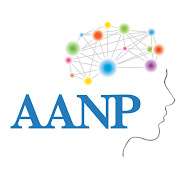Specialty Designation
Fellowship
In same state as program
0
Number of accredited programs
39
Length of accredited training
Minimum number of prior years required
Offers graduate year 1 positions, available immediately upon medical school completion
No
Average number of PY1 interviews
2.70
Percent of programs requiring Step 1 score for interview
74.30
Percent of programs requiring Level 1 score (for DOs) for interview
43.50
Total number of active residents/fellows
Average number of residents/fellows
1.30
Average percent female
56.60
Average percent international medical graduates
33.30
Average percent DOs
15.50
Average number of full-time physician faculty
5.10
Average number of part-time physician faculty
0.10
Average percent female full-time physician faculty
33.60
Average ratio of full-time physician faculty to resident/fellow
3.50
Average hours on duty per week
48.60
Average maximum consecutive hours on duty
12.50
Average days off duty per week
1.80
Average percent of training in hospital outpatient clinics
20.00
Average percent of training in non-hospital ambulatory care community settings
5.50
Average number of days of vacation
18.70
Average resident/fellow compensation
Specialty Overview
Neuropathology deals with the tissue-based diagnosis of diseases of the central and peripheral nervous systems, skeletal muscle and eye. Neuropathology is the study of disease of nervous system tissue, usually in the form of either small surgical biopsies or whole-body autopsies.
Neuropathologists usually work in a department of anatomic pathology, but work closely with the clinical disciplines of neurology, and neurosurgery, which often depend on neuropathology for a diagnosis. Neuropathology also relates to forensic pathology because brain disease or brain injury can be related to cause of death. Neuropathology should not be confused with neuropathy, which refers to disorders of the nerves themselves (usually in the peripheral nervous system).
